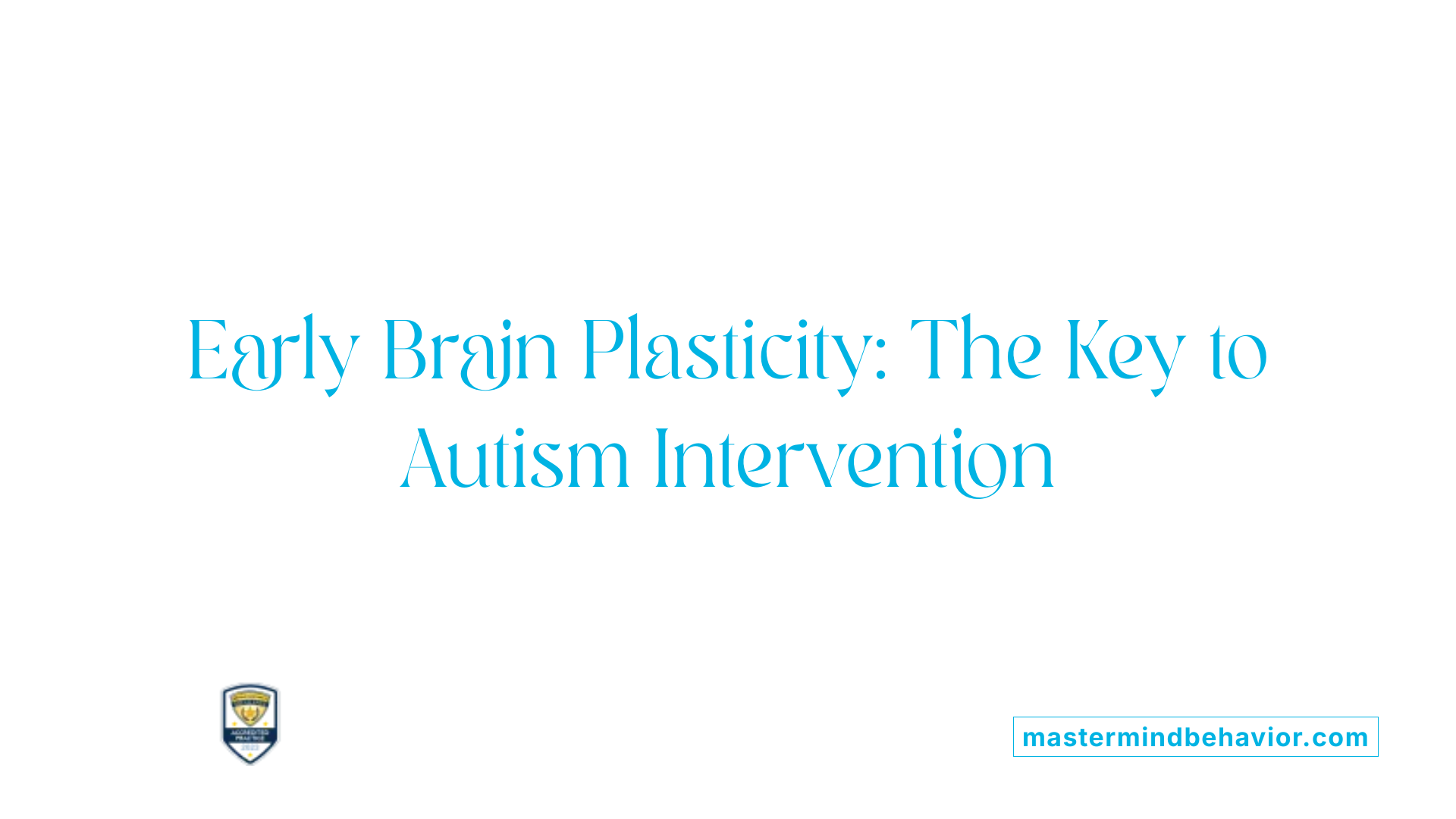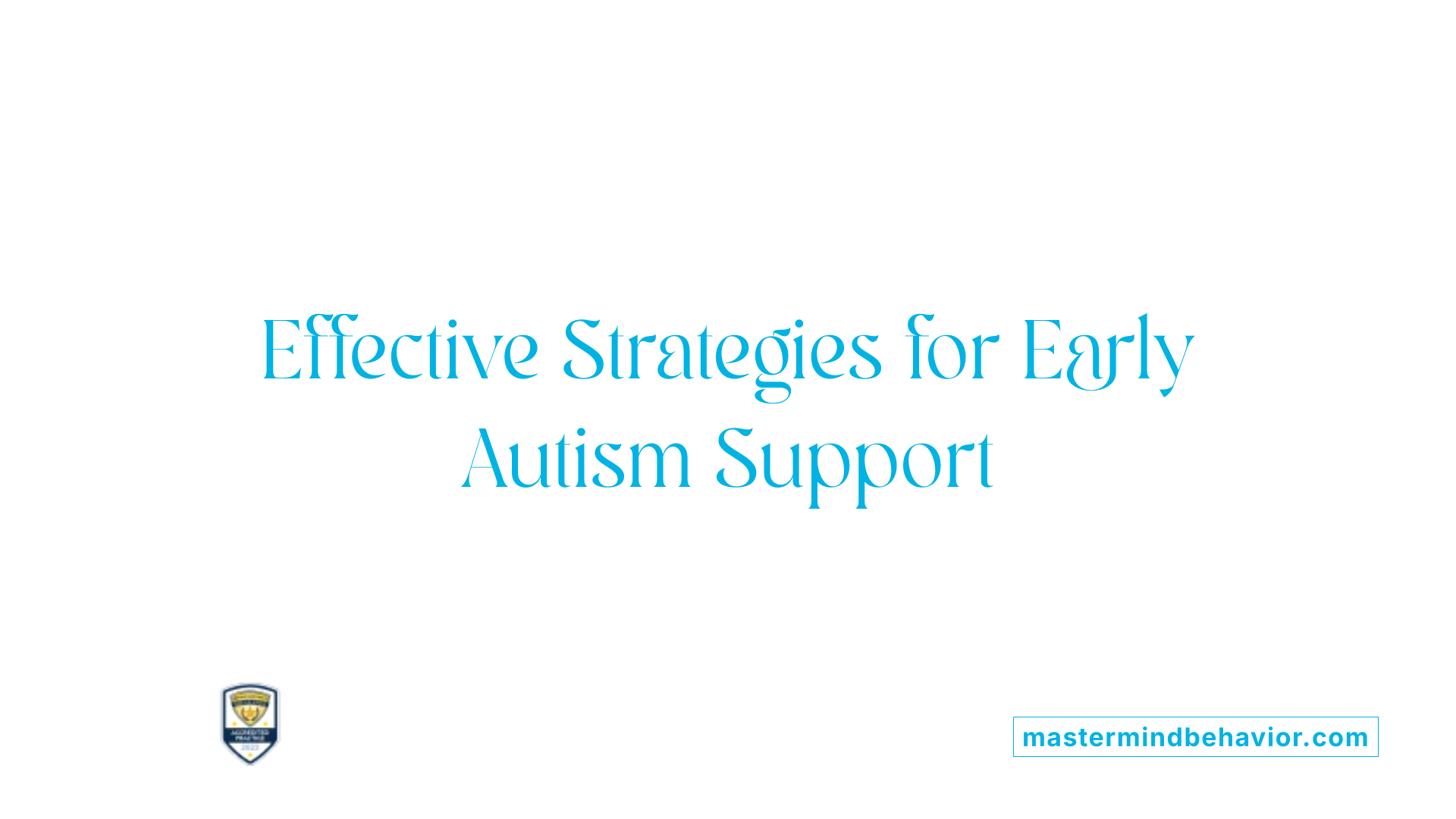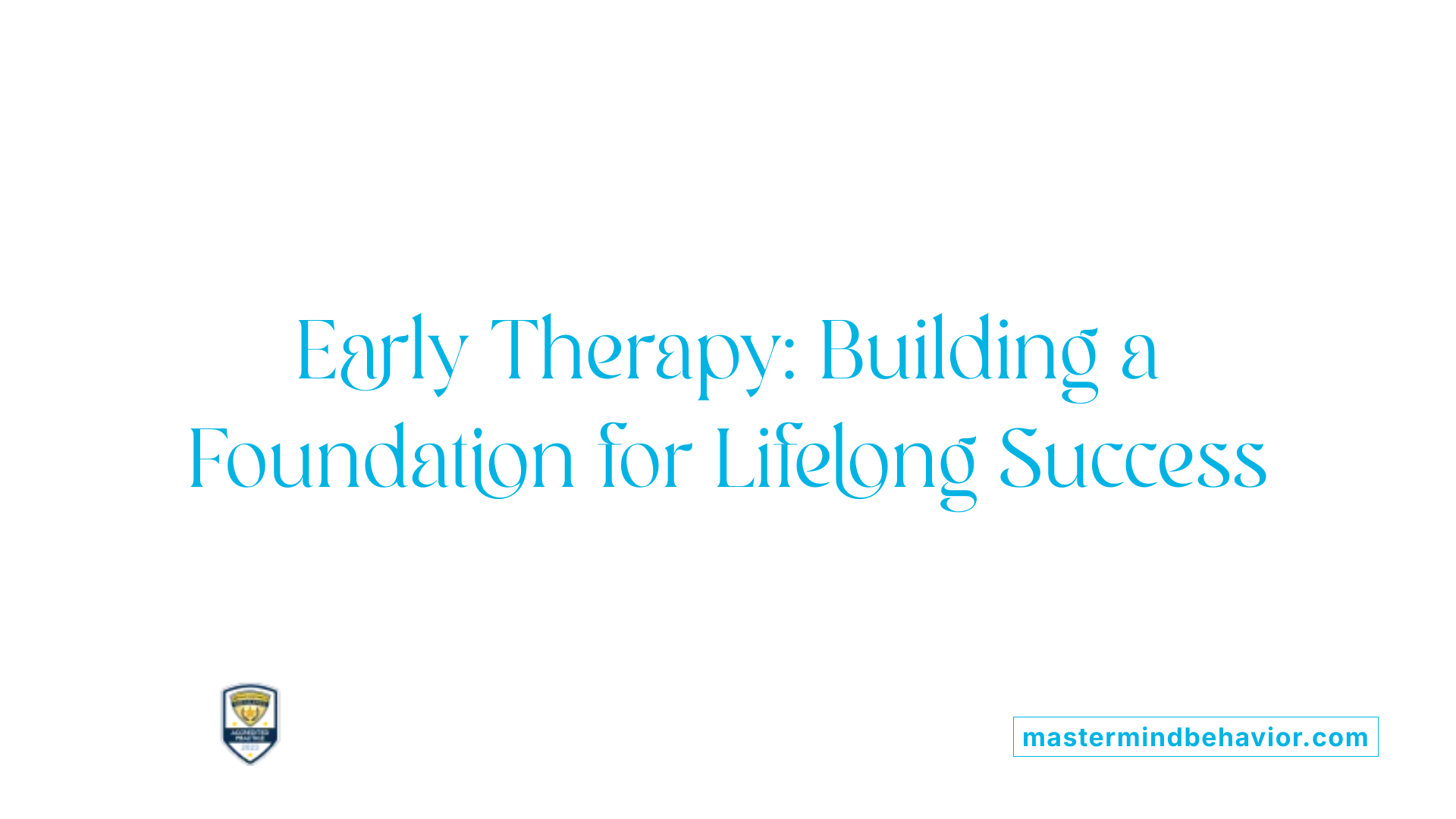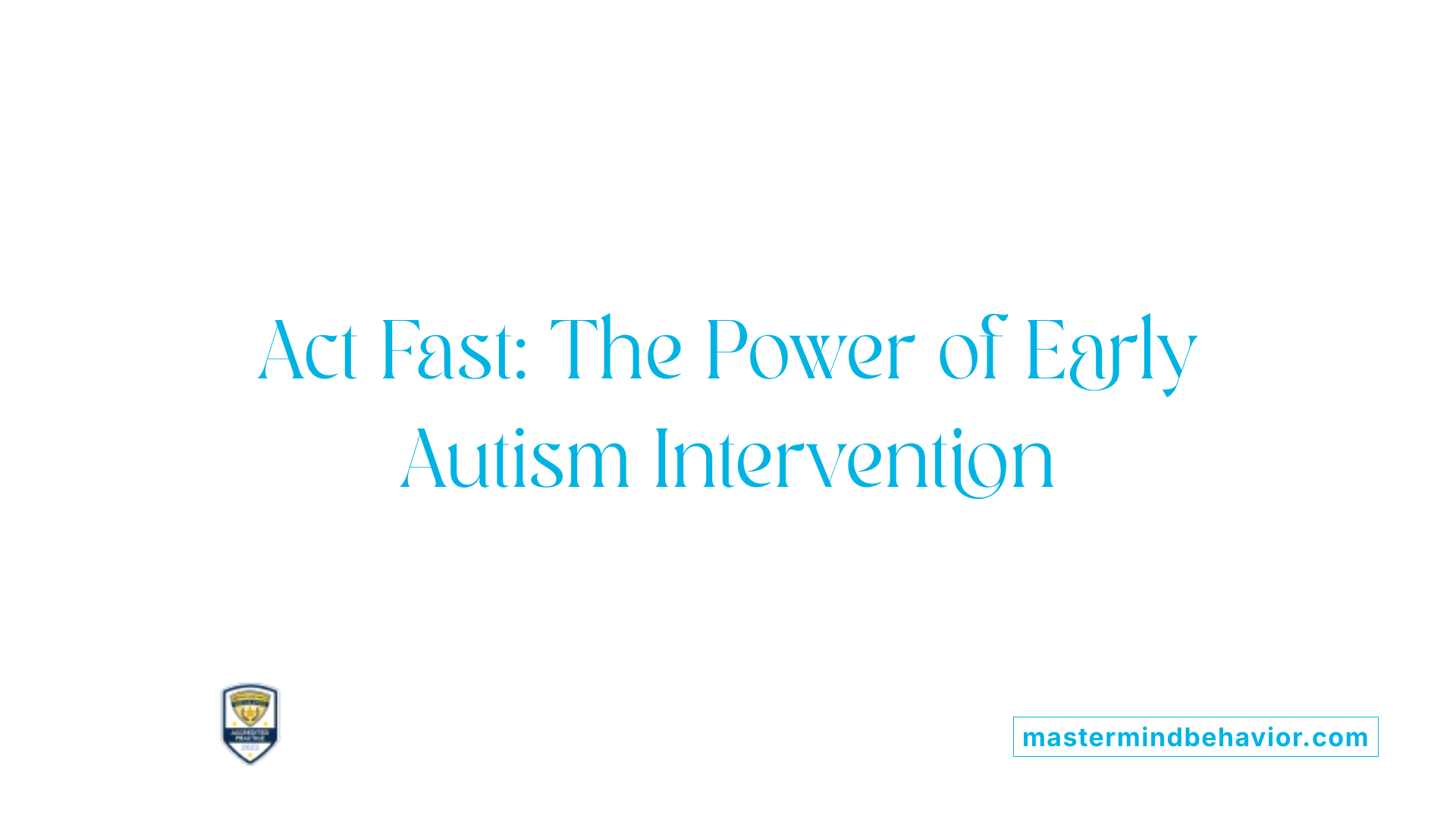Understanding the Critical Role of Early Action
Early intervention in autism treatment is a pivotal factor that can significantly alter the developmental trajectory of children with autism spectrum disorder (ASD). It capitalizes on the brain's heightened plasticity during the early years to foster essential social, communication, and behavioral skills. This article explores the profound importance of initiating early intervention, the methods employed, and the long-term benefits derived from timely support, emphasizing why acting early is the most effective strategy for improving outcomes for children with autism.
The Critical Window for Effective Intervention

When is the critical window for effective early intervention in autism?
The period between ages 1 and 5 is considered the most vital window for initiating early intervention in autism. During these years, a child's brain is particularly plastic, meaning it can change and adapt more easily compared to later stages of development.
This heightened neuroplasticity allows targeted therapies and supportive environments to effectively shape neural pathways, promoting social, communication, and behavioral skills. Intervening during this sensitive phase can significantly influence long-term development outcomes and may even reduce the severity of autism symptoms.
Research highlights that early support during these formative years not only improves immediate skills but also helps establish a robust foundation for lifelong learning and social interaction.
While interventions at later ages still provide benefits, the first few years offer a unique opportunity to maximize therapy effectiveness by leveraging natural brain development processes.
Timely diagnosis and intervention are crucial, as they enable parents and professionals to harness this critical window for optimal impact. Overall, the early years serve as a foundational period where intervention can significantly alter a child's developmental trajectory, leading to better social, communicative, and adaptive skills in the future.
Methods and Strategies in Early Autism Therapy

What are common methods and strategies used in early autism intervention?
Early intervention for autism incorporates various evidence-based therapies designed to improve communication, social skills, and daily functioning. One of the most prevalent approaches is Applied Behavior Analysis (ABA), which uses structured teaching and reinforcement techniques to increase desirable behaviors and reduce challenging ones. This therapy is highly individualized and often involves intensive hours of treatment each week.
Another prominent method is the Early Start Denver Model (ESDM), a naturalistic developmental behavioral intervention suitable for children as young as 12 months. ESDM combines traditional ABA principles with relationship-based, play-oriented strategies, promoting social and communication skills during natural routines.
Speech and language interventions are critical components, targeting areas such as receptive and expressive language, using approaches like Picture Exchange Communication System (PECS), sign language, and conventional speech therapy to foster better communication.
Occupational therapy (OT) focuses on developing essential daily living skills, fine motor abilities, and sensory regulation. OT employs sensory diets, environmental modifications, and play-based activities to address sensory processing challenges and promote independence.
Family involvement is fundamental in early intervention, with training that equips parents and caregivers to implement strategies at home. Family-centered services improve consistency, support emotional well-being, and enhance treatment outcomes.
Play-based and naturalistic approaches such as Floortime and music therapy help motivate children, build emotional bonds, and encourage social interaction through engaging activities that reflect children’s interests.
Overall, these methods are tailored to each child's specific developmental profile and are most effective when delivered in supportive environments, continuously monitored, and adapted to foster communication, social interaction, and adaptive skills during the brain's peak plasticity in early childhood.
Educational and Developmental Advantages of Early Therapy

What are the educational and developmental advantages of early therapy?
Early therapy provides numerous benefits that significantly impact a child's development and education. Because the first few years of life are a period of high brain plasticity, early intervention maximizes the brain's ability to form new neural connections. This helps children develop essential skills in communication, motor ability, social interaction, and emotional regulation.
Children who receive early therapy tend to reach developmental milestones more consistently. For example, they improve in language skills, play, and social behaviors that are critical for school readiness. Addressing delays early also reduces the likelihood of requiring extensive special education services later, as children are better prepared to learn alongside their peers.
In addition, early intervention fosters inclusive learning environments. Children gain confidence and independence through targeted support, which enhances their ability to participate in classroom activities and peer interactions. Families also benefit by gaining resources, education, and emotional support to help their children succeed.
Overall, starting therapy early not only promotes core skill development but also shapes a child's long-term growth, confidence, and success in school and beyond. It is a proactive step that lays the foundation for a more adaptive, well-rounded learner in their future educational journey.
Why Early Intervention is Imperative

Why is early intervention for autism important?
Early intervention for autism holds a crucial role in shaping a child's developmental trajectory. Because a child's brain is most adaptable during the early years, particularly before age 3, initiating therapy during this window leverages neuroplasticity—the brain's capacity to form new connections. This flexibility allows children to acquire essential skills such as communication, social interaction, and daily living behaviors more effectively.
Research indicates that starting interventions like speech therapy, family training, and physical therapy early can lead to significant improvements. In fact, some children who receive timely support may even no longer meet the criteria for autism as they grow older, illustrating how early action can reduce core symptoms.
Beyond symptom alleviation, early diagnosis—possible as early as 18 months—enables prompt treatment. This proactive approach helps children develop better social skills, reduce behavioral challenges, and foster independence. Family involvement and access to services are vital, as early intervention not only benefits the child's growth but also provides essential support and resources for the family.
Overall, acting swiftly not only enhances the child's potential for learning and development but also maximizes the effectiveness of therapies. The best outcomes are achieved when intervention begins as soon as developmental delays or signs of autism are noticed, ideally before age 3, to harness the brain's natural capacity for change during this sensitive period.
Reducing Symptoms and Enhancing Development
How can early intervention reduce autism symptoms?
Early intervention for autism, especially when initiated at or before preschool age, plays a crucial role in diminishing the severity of autistic symptoms. This approach capitalizes on the brain's high plasticity during early childhood, allowing for more effective reshaping of neural pathways involved in social communication, behavior, and emotional responses.
Research demonstrates that therapies like Speech Therapy, Applied Behavioral Analysis (ABA), and developmental relationship-based approaches such as the Early Start Denver Model (ESDM) not only promote skill acquisition but also actively reduce challenging behaviors and repetitive actions associated with autism.
Families are integral to this process. Through family training and consistent routines, parents can reinforce skills learned in therapy, fostering a supportive environment that encourages social engagement and communication. Such consistency across home and therapy settings amplifies the benefits of early intervention.
Children who receive targeted interventions early in life often show marked improvements in core areas such as social interaction, language development, and emotional regulation. Notably, some children who begin treatment as young as 6 months exhibit substantial progress, with studies indicating that many no longer meet autism criteria as they age.
The long-term impact of early intervention extends beyond symptom reduction. It enhances the child's overall development, leading to better social integration, academic preparedness, and independence. By addressing symptoms early, caregivers and professionals can help children reach their full potential and improve their quality of life.
| Aspect | Impact | Additional Details |
|---|---|---|
| Social Skills | Improved | Increased ability to initiate and sustain social interactions |
| Communication | Enhanced | Better expressive and receptive language skills |
| Behavior | Reduced | Fewer meltdowns and repetitive behaviors |
| Long-term Outcomes | Positive | Increased independence and societal participation |
In combination, these therapies and family strategies form a comprehensive approach that effectively reduces autism symptoms and promotes meaningful developmental gains.
Long-Term Outcomes and Benefits of Early Support
How does early intervention influence long-term developmental outcomes in autism?
Starting intervention early has a significant influence on the future development of children with autism. When support begins during the crucial early childhood years, especially before age three, it harnesses the brain's plasticity — its ability to adapt and form new connections. This early action can lead to marked improvements in cognitive, social, and communication skills, which are essential for school success and social integration.
Research shows that children who receive early therapy tend to experience a reduction in the severity of autism symptoms over time. They often develop better social skills, communicate more effectively, and display fewer disruptive behaviors. These changes can open doors for more meaningful participation in academic activities and social interactions.
Mechanisms behind these positive outcomes include targeted therapies such as Applied Behavior Analysis (ABA) and developmental approaches like the Early Start Denver Model (ESDM), which emphasize parent involvement and naturalistic teaching. These interventions help children improve in areas like language, play, and emotional understanding.
Furthermore, early intervention not only benefits the children but also provides crucial support to families by reducing stress, increasing parental confidence, and guiding effective strategies at home. It also enhances community integration, as children are better prepared for educational environments and social opportunities.
Overall, timely, intensive support in the early years promotes more adaptive behaviors, supports lifelong skills development, and fosters greater independence in children with autism.
Empowering Families and Children for a Brighter Future
In conclusion, early intervention in autism treatment is not merely beneficial but essential for maximizing a child's developmental potential. By initiating therapies during the most receptive years—when the brain is most adaptable—children can achieve significant improvements in communication, social skills, and behavioral regulation. Early detection, combined with evidence-based methods like ABA, speech therapy, and occupational therapy, creates a robust foundation for lifelong success. Moreover, the benefits extend beyond the individual, supporting families and communities through reduced stress and enhanced integration. Recognizing the importance of acting swiftly when developmental concerns arise ensures that children with autism receive the support they need to thrive. Ultimately, early intervention holds the key to transforming lives and fostering hope for a better future for children with autism.
References
- Early Intervention for Autism | NICHD
- Importance of Early Intervention in Reducing Autistic Symptoms and ...
- Understanding The Significant Impact Of Early Intervention
- Early Intervention - UNC Autism Research Center
- Accessing Services for Autism Spectrum Disorder - CDC
- 5 Benefits of Early Intervention for Autism - LEARN Behavioral
- Early intervention improves long-term outcomes for children with ...
- The value of early intervention for children with autism - ScienceDirect
- Early intervention lessens autism symptoms | University of California









